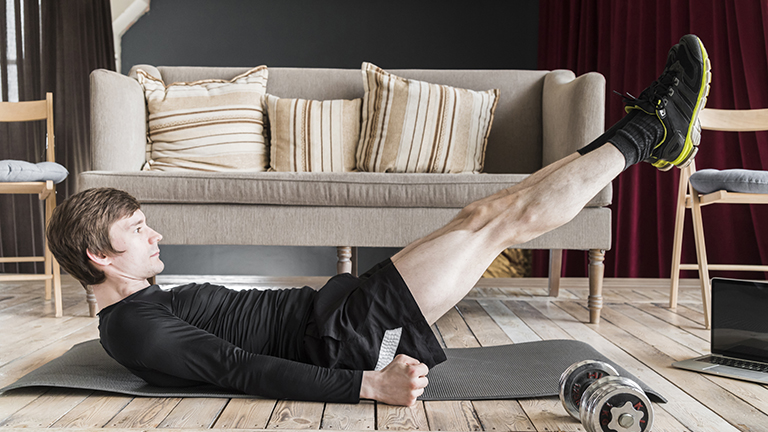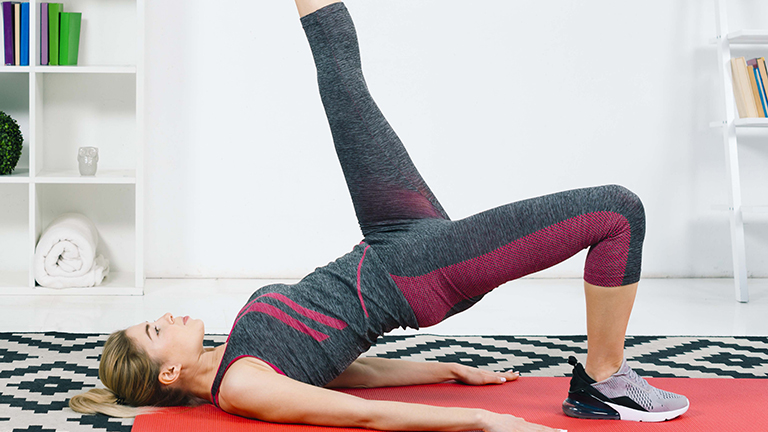Exercises for Blood Circulation in Legs, Good blood circulation in the legs is essential for keeping them healthy and strong. Poor circulation can lead to swelling, tiredness, numbness, or discomfort, and over time may cause issues like varicose veins. Sitting for long periods, lack of exercise, and aging are common factors that reduce blood flow in the legs. The good news is that simple exercises can help improve circulation, strengthen muscles, and support vein health. This article will guide you through practical exercises and lifestyle tips to boost leg blood flow and keep your legs feeling energised and healthy.
Understanding Leg Blood Circulation
Why Leg Circulation is Important
Leg blood circulation is essential for maintaining overall cardiovascular health. Good blood flow ensures that oxygen and nutrients reach the muscles, joints, and tissues, reducing fatigue, swelling, and risk of serious conditions like varicose veins or deep vein thrombosis (DVT). Proper circulation supports mobility, especially in older adults or individuals who spend long hours sitting.
Common Causes of Poor Leg Circulation
Poor circulation in the legs can result from a variety of factors, including:
- Prolonged sitting or standing
- Obesity and sedentary lifestyle
- Smoking or excessive alcohol consumption
- Diabetes or cardiovascular disorders
- Varicose veins or peripheral artery disease (PAD)
- Aging and weakened veins
Understanding the causes helps in selecting the exercises for blood circulation in legs that are most effective for your condition.
[INSERT_ELEMENTOR id=”5108″]
Benefits of Exercising for Leg Blood Flow
Reduce Swelling and Fatigue
Swelling and fatigue in the legs are often signs of poor blood circulation. When blood flow slows, fluid can accumulate in the lower legs and ankles, causing discomfort and heaviness. Regular leg exercises, such as ankle pumps, calf raises, and walking, help push blood back toward the heart, reducing fluid buildup. Improved circulation also delivers more oxygen and nutrients to the muscles, preventing tiredness and cramping. Simple movements done consistently throughout the day, even while sitting or standing, can make a significant difference. Over time, these exercises help your legs feel lighter, more energized, and less prone to swelling.
Prevent Varicose Veins
Varicose veins occur when veins become weak or stretched, often due to poor circulation and prolonged standing or sitting. Regular leg exercises strengthen the muscles around the veins, helping blood flow back to the heart more efficiently. Activities like calf raises, walking, cycling, and leg lifts stimulate circulation and reduce pressure on the veins. Maintaining an active lifestyle, avoiding long periods of immobility, and elevating the legs when resting can further protect vein health. Consistently performing these exercises not only helps prevent varicose veins but also reduces discomfort, swelling, and the risk of related complications over time.
Improve Overall Heart Health
Leg exercises not only benefit the veins but also support overall heart health. When muscles in the legs contract during activities like walking, cycling, or calf raises, they help pump blood back to the heart, reducing strain on the cardiovascular system. Improved leg circulation enhances oxygen delivery throughout the body, supporting heart function and endurance. Regular physical activity also helps control blood pressure, manage weight, and lower cholesterol levels, all of which are vital for heart health. By including simple leg-focused exercises in your daily routine, you can strengthen your heart while keeping your legs energized and healthy.
Top Exercises for Blood Circulation in Legs
The following exercises are highly effective for improving leg blood flow and overall leg vein health. They can be performed at home, in the office, or at the gym.
Ankle Pumps
Ankle pumps are simple yet powerful exercises that stimulate blood flow in the lower legs and feet.
- Sit or lie down with your legs extended.
- Flex your ankles upward, then point your toes downward.
- Repeat 20–30 times per session.
Calf Raises
Calf raises strengthen the muscles in your lower legs, supporting venous return and circulation.
- Stand straight with feet hip-width apart.
- Lift your heels off the ground, balancing on your toes.
- Lower your heels slowly and repeat 15–20 times.
Leg Extensions
Leg extensions target the quadriceps and improve blood flow through the upper and lower legs.
- Sit on a chair with feet flat on the floor.
- Lift one leg straight until parallel with the floor.
- Hold for 2–3 seconds and lower. Repeat 10–15 times per leg.
Walking and Light Jogging
Walking and light jogging increase overall blood circulation in the legs and lower body. They also strengthen muscles and improve cardiovascular fitness.
- Aim for at least 30 minutes daily.
- Maintain a moderate pace that allows conversation.
- Use proper footwear to reduce strain.
Cycling or Stationary Bike
Cycling promotes venous return and reduces stiffness in the leg veins.
- Set a comfortable resistance on a stationary bike.
- Pedal for 15–30 minutes, focusing on smooth movements.
- For outdoor cycling, maintain a safe pace and posture.
Seated Exercises for Weak or Immobile Legs
Foot Flexes
Foot flexes are excellent for preventing blood pooling in the lower extremities.
- Sit or lie down with legs extended.
- Flex your feet upward and downward slowly.
- Repeat 20–30 times per session.
Seated Marching
Seated marching is a simple exercise that promotes blood circulation in the legs, especially for people who spend long hours sitting or have limited mobility.
How to do it:
-
Sit upright on a chair with your feet flat on the floor.
-
Lift one knee toward your chest as if you are marching in place.
-
Lower your foot back to the floor and repeat with the other leg.
-
Continue alternating legs for 1–2 minutes, gradually increasing the duration as you build stamina.
This exercise helps stimulate blood flow, reduce swelling, and strengthen the hip and thigh muscles without putting pressure on the joints. Doing seated marching several times a day can significantly improve leg circulation and reduce fatigue.
[INSERT_ELEMENTOR id=”5745″]
Leg Lifts and Circles
Leg lifts and circles strengthen leg muscles and promote circulation in a seated position.
- Lift one leg slightly off the floor and rotate it clockwise 10 times, then counterclockwise 10 times.
- Switch legs and repeat.
Lifestyle Tips to Improve Leg Circulation
Elevate Legs for Better Flow
Elevating your legs above heart level for 15–20 minutes daily can improve blood return to the heart and reduce swelling.
Maintain a Healthy Weight
Excess weight can compress veins and reduce circulation. Combining leg exercises with a balanced diet helps maintain vein health and overall mobility.
Stay Hydrated and Stretch Regularly
Proper hydration supports smooth blood flow. Regular stretching enhances flexibility, prevents stiffness, and improves venous return.
Incorporate Cardiovascular Activity
Activities like swimming, dancing, or brisk walking enhance leg blood flow and cardiovascular endurance, complementing targeted leg exercises.
Wear Compression Socks
For individuals with varicose veins or mild swelling, compression socks can support veins and improve blood circulation during daily activities.
Precautions and When to See a Doctor
Recognising Symptoms of Poor Circulation
Signs of poor leg circulation include:
- Swelling in the feet, ankles, or calves
- Cold or numb feet
- Discoloration or bluish skin
- Leg cramps or persistent fatigue
- Slow-healing wounds or ulcers
Medical Conditions Affecting Leg Blood Flow
Certain medical conditions can reduce blood circulation in the legs, making exercise and lifestyle changes essential but sometimes insufficient on their own. Understanding these conditions helps identify when to seek medical advice.
-
Peripheral Artery Disease (PAD) – A condition where narrowed arteries reduce blood flow to the legs, causing pain or cramping while walking. More info: Mayo Clinic – PAD
-
Deep Vein Thrombosis (DVT) – Formation of blood clots in deep leg veins that can be life-threatening if they travel to the lungs. More info: CDC – DVT
-
Chronic Venous Insufficiency (CVI) – Veins fail to efficiently return blood to the heart, causing swelling, varicose veins, and skin changes. More info: WebMD – CVI
-
Diabetic Neuropathy – High blood sugar levels damage nerves and blood vessels in the legs, reducing circulation and increasing risk of ulcers. More info: American Diabetes Association – Neuropathy
If you experience persistent leg pain, swelling, discoloration, or slow-healing wounds, consult a healthcare professional immediately. Early detection and management of these conditions are critical for preventing serious complications.
[INSERT_ELEMENTOR id=”5792″]
Conclusion: Exercises for Blood Circulation in Legs
Improving blood circulation in the legs is crucial for overall health, mobility, and vein integrity. By integrating targeted exercises for blood circulation in legs—such as ankle pumps, calf raises, leg extensions, and walking—along with lifestyle strategies like leg elevation, hydration, and cardiovascular activity, you can prevent complications, reduce swelling, and maintain healthy veins.
Consistency is key. Regularly practising these exercises, even in a seated or limited mobility setup, can provide long-term benefits for blood flow and leg health. Always monitor your body for warning signs and consult a medical professional when necessary to ensure safe and effective circulation improvement.


